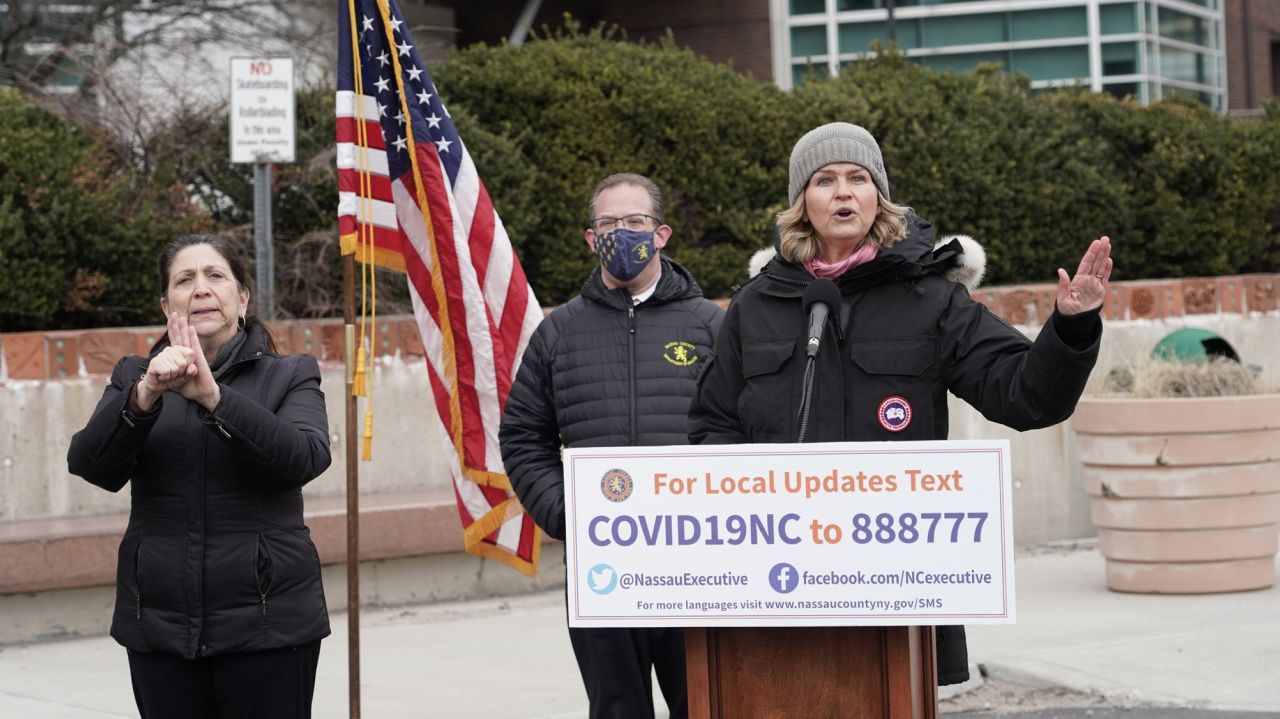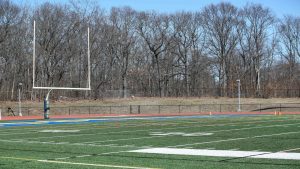COVID-19 positivity levels in testing on Long Island and statewide have decreased since a holiday season spike, but are stubbornly tracking above levels of last summer when they hit a low point, according to state data released Tuesday.
Positivity levels increased again slightly locally and across New York in results released Tuesday, as Gov. Andrew M. Cuomo said widespread vaccinations are the key to ending the pandemic.
The seven-day average statewide was 3.24% in test results from Monday, up from 3.22% and 3.15% the previous two days.
Long Island had the second highest level of any region in the state, registering 4.53% — also a slight increase from previous days. New York City’s average was 4.21%.
The statewide daily level was 4.14%.
Last summer, the level hovered around 1% on Long Island and statewide.
Nassau County Executive Laura Curran said her administration is working to understand why the positivity rate has plateaued.
“One idea that came up is that with more people being tested for high school sports those young people might have gone undetected and asymptomatic — that could be one of the reasons contributing to that,” she said in a COVID-19 briefing on Tuesday.
Nassau County Health Commissioner Larry Eisenstein, an infectious disease doctor, said there were more than 500 positive cases reported yesterday. He also said the data suggests that a healthier, asymptomatic population might be testing positive.
“I believe we need to start getting back to the things we normally do. We need to start living again and not be isolated and get our economy back up and running. As more people are becoming vaccinated you are going to see more of that but we have to do it safely,” Eisenstein said.
If a group of people are not vaccinated and they are socializing, they really need to take precautions, Eisenstein said.
The number of new confirmed cases have also refused to fall to levels of last summer.
The number of new confirmed COVID-19 cases in results Monday was 623 in Nassau County, 652 in Suffolk County and 3,370 in New York City. Last summer each county on Long Island often had well below 100 new confirmed cases a day.
Statewide 51 people died on Monday of causes related to the virus, including five in Nassau and eight in Suffolk.
Still, Curran sounded notes of optimism, saying nearly 50,000 people have been vaccinated at the three county sites and her administration is “putting the final touches on the county mass vaccination site at Nassau Coliseum.”
“We are getting more residents vaccinated in Nassau County than in any other large county in New York State,” Curran said.
More than 27% of the approximately 1.3 million residents in Nassau have received at least one vaccine dose, Curran said.
Those residents have gone to vaccine distribution sites run by either the county, state, New York City, hospital, health care facility, house of worship or local pharmacy.
Vaccine supply on Long Island is about to “dramatically increase,” Curran said, noting the new vaccine sites at Stony Brook Southampton, SUNY Old Westbury and Suffolk County Community College’s Brentwood campus.
“Light at the end of the tunnel is getting closer and getting brighter,” Curran said.
Cuomo has said that the number of vaccines delivered by the federal government to New York will likely remain flat this week, but start to quickly ramp up after that.
President Joe Biden has said every American adult who wants it should be able to receive a vaccine by the end of May.
Curran said the county continues to reach the most vulnerable residents such as seniors and minority populations. On Friday and Saturday, the county Health Department will run two new pop-up vaccine sites in New Hyde Park that are expected to inoculate about 1,000 residents in total.
A preregistration online queue run by the county has about 7,000 people in it, Eisenstein said.
“Once you are preregistered, we send you an email when we have appointments available with a calendar link and people can pick their times. And about 50 percent of people do pick a time, if they don’t they stay in the queue and then they get another chance and then another. After three weeks of turning us down, then we clear that spot so that other people get in,” Eisenstein said.
The total number of hospitalizations for COVID-19 in Nassau has been cut in half since January and admissions to intensive care units are down 48% for the same time period, Curran added.
The number of new confirmed cases have also refused to fall to levels of last summer.
The number of new confirmed COVID-19 cases in results Monday was 623 in Nassau County, 652 in Suffolk County and 3,370 in New York City. Last summer each county on Long Island often had well below 100 new confirmed cases a day.
Statewide 51 people died on Monday of causes related to the virus, including five in Nassau and eight in Suffolk.
GETTING COVID-19 VACCINES IN NY
Who qualifies for COVID-19 shots?
The State of New York has expended its eligibility list for vaccines against COVID-19 several times, expanding the groups of people included in the phases. This is a summary of the eligible groups. The following are the qualifying categories, as revised on March 9.
Group in Phase 1A
The state said about 2.1 million state residents belong in this group, including:
- Health care workers at hospitals who interact with patients.
- Residents and staff at nursing homes and assisted living facilities.
- Dentists, psychologists and others deemed health care workers with direct contact with patients.
- Employees of Federally Qualified Health Centers.
- EMT volunteers and staff.
- Coroners, medical examiners, some funeral workers.
- Staff and residents of state facilities for people with developmental disabilities, mental health care and addiction services.
- Employees at urgent care centers.
- Individuals administering COVID-19 vaccines, including local health department staff.
- Staff at ambulatory centers.
- Home care and hospice workers.
- Residents and staff at other congregate care facilities.
Group in Phase 1B
The state estimated about 3.2 million residents belong in this group, including:
- People 75 years of age and older.
- Teachers and education workers, including in-person college instructors, substitute teachers, student teachers, school administrators, paraprofessional staff, support staff, contractors in schools and bus drivers.
- First responders, including police; firefighters; state police; sheriff’s offices; county, town and village police departments, and other law enforcement offices.
- Public safety workers, including dispatchers and technicians.
- Public transit workers, including airport, railroad, subway, bus, ferry and Port Authority employees.
- Corrections officers.
- Other sworn and civilian personnel, such as court and peace officers.
- Grocery store workers dealing with the public.
- Individuals living in homeless shelters.
Following federal recommendations:
Added at the discretion of local governments:
- Taxi drivers.
- Restaurant workers.
- Residents of facilities for developmentally disabled people.
- Hotel workers who interact with the public.
Beginning March 10, 2021:
- State residents age 60 and older (the age threshold had been 65 and older).
Beginning March 17, 2021:
- “Public-facing” government and public employees.
- Workers for not-for-profit organizations who provide “public-facing” services.
- Building service workers who are “public-facing” employees.
SOURCE: New York State, Northwell Health.
Check back for updates on this developing story. Sign up for COVID-19 text alerts at newsday.com/text.



















